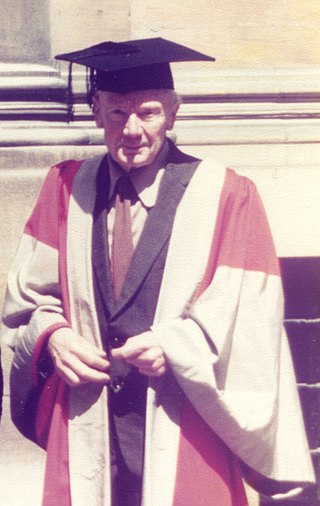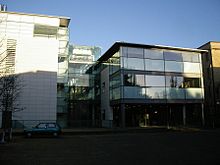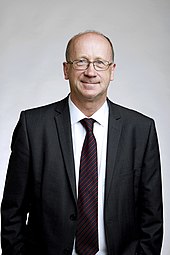
Edmund ("Ted") John Bowen FRS was a British physical chemist.

The Dyson Perrins Laboratory is in the science area of the University of Oxford and was the main centre for research into organic chemistry of the University from its foundation in 1916 until its closure as a research laboratory in 2003. Until 2018, parts of the building were used as teaching laboratories in which undergraduate students were trained in practical organic chemistry.

Sir Cyril Norman Hinshelwood was a British physical chemist and expert in chemical kinetics. His work in reaction mechanisms earned the 1956 Nobel Prize in chemistry.

Sir Jack Edward Baldwin was a British chemist. He was a Waynflete Professor of Chemistry at the University of Oxford (1978–2005) and head of the organic chemistry at Oxford.

The Physical and Theoretical Chemistry Laboratory (PTCL) is a major chemistry laboratory at the University of Oxford, England. It is located in the main Science Area of the university on South Parks Road. Previously it was known as the Physical Chemistry Laboratory.

Malcolm Leslie Hodder Green was Professor of Inorganic Chemistry at the University of Oxford. He made many contributions to organometallic chemistry.

William Henry Perkin Jr., FRS FRSE was an English organic chemist who was primarily known for his groundbreaking research work on the degradation of naturally occurring organic compounds.

The Oxford University Science Area in Oxford, England, is where most of the science departments at the University of Oxford are located.
The School of Chemistry is a school of the University of Edinburgh, in Scotland. In the 2008 Research Assessment Exercise (RAE) the school was ranked sixth in the UK.

Brigadier-General Sir Harold Brewer Hartley was a British physical chemist. He moved from academia to important positions in business and industry, including serving as Chairman of the British Overseas Airways Corporation.

Robert Joseph Paton Williams was an English chemist, an Emeritus Fellow at Wadham College, Oxford and an Emeritus Professor at the University of Oxford.

Sir Anthony Kevin Cheetham is a British materials scientist. From 2012 to 2017 he was Vice-President and Treasurer of the Royal Society.

Sir John Shipley Rowlinson was a British chemist. He attended Oxford University, where he completed his undergraduate studies in 1948 and doctoral in 1950. He then became research associate at University of Wisconsin (1950–1951), lecturer at University of Manchester (1951–1961), Professor at Imperial College London (1961–1973) and back at Oxford from 1974 to his retirement in 1993.

Benjamin Guy Davis is a British chemist who is Professor of Chemical biology in the Department of Pharmacology and a member of the Faculty in the Department of Chemistry at the University of Oxford and a Fellow of Pembroke College, Oxford. He holds the role of Science Director for Next Generation Chemistry (2019-2024) and Deputy Director (2020-) at the Rosalind Franklin Institute.

The Balliol-Trinity Laboratories in Oxford, England, was an early chemistry laboratory at the University of Oxford. The laboratory was located between Balliol College and Trinity College, hence the name. It was especially known for physical chemistry.
Mark Brouard is Helen Morag Fellow and Tutor in Chemistry at Jesus College, and is a professor of chemistry at the University of Oxford, where he was head of the Department of Chemistry from 2015–2023. He is a specialist in reaction dynamics. In collaboration with professor Claire Vallance, Brouard has created the PImMS sensor, claimed to be "the fastest camera in the world", which is used to detect particles.

The Pixel Imaging Mass Spectrometry camera (PImMS) is an ultrafast imaging sensor designed for time-of-flight particle imaging. It was invented by professors of chemistry at the University of Oxford, Mark Brouard and Claire Vallance., Renato Turchetta from IMASENIC, and Andrei Nomerotski from Brookhaven National Labs. The camera and accompanying software have been further developed by Iain Sedgwick, Jaya John John, and Jason Lee. The camera has been used for studies in chemical reaction dynamics, imaging mass spectrometry, and neutron time-of-flight imaging.
Claire Vallance is a professor of Physical Chemistry at the University of Oxford, Tutorial Fellow in Physical Chemistry at Hertford College, and past President of the Faraday Division of the Royal Society of Chemistry. In collaboration with professor Mark Brouard and others, she created the PImMS sensor, used for time-of-flight particle imaging and recently featured in the Royal Society of Chemistry's Research Frontiers report. She is co-founder of the spin-out company Oxford HighQ, which is developing next-generation chemical and nanoparticle sensors based on optical microcavity technology. Vallance's research spans chemical reaction dynamics, optical microcavity spectroscopy, and applications of spectroscopy and imaging in medical diagnostics. She is also an accomplished musician and triathlete.
Andrew L. GoodwinFRS is a university research professor and professor of materials chemistry at the University of Oxford.
Frederick "Freddie" Ernest King (1905–1999) was a British biochemist.




















